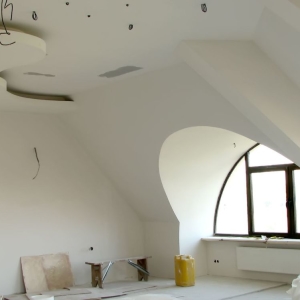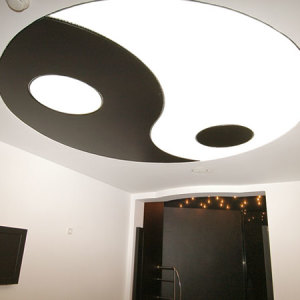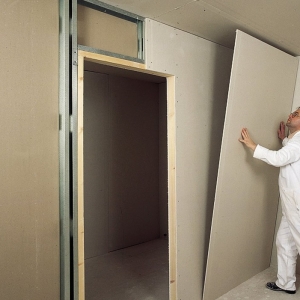Thought about repair? Want to make the interior of the apartment unusual and original? Then we advise you to decorate the walls with gypsum or putty. This technique is called bas-relief. The surface that is covered with bas-relief creates a 3D effect and visually increases the room. In our article, we will find simple and effective ways how to make a decorative modeling with their own hands.
Preparation for the creation of bas-relief
No need to be a professional artist or sculptor to create a real masterpiece on the wall. Do not rush to create too voluminous, difficult paintings with complex elements, such as landscape or portrait. First of all, try your hand at the cardboard surface. So you will learn how to work with the material. Already after working on cardboard will satisfy your requirements, proceed to the design of the wall or ceiling. To work, you will need:
- gypsum putty (it can also be replaced with clay, alabaster or building plaster);
- stencils, workpiece with the desired pattern;
- mastichens (play an important role to create volumetric elements, they must be purchased from different sizes, they will help to perform work gently);
- putty knife;
- tassels of different sizes (it is desirable that the brushes are made with natural bristles, be sure to check that the pile does not leave);
- wide scotch;
- water-emulsion paint and colors;
- acrylic spacure for surface treatment;
- sandpaper;
- primer.
Be sure to select a working surface. To perform the bas-relief it was more convenient, and ultimately he looked spectacularly, the wall must be aligned. Also think about the additional lighting of the decorated wall, because the volumetric picture with illumination looks incredibly beautiful.

Initial stage of work
First of all, you must prepare a sketch. Even if you have artistic skills, the blank with the pattern does not prevent.
- Stage 1 - Move the paper sketch to the film (draw using a ballpoint handle or permanent marker);
- 2 Stage - Treat the wall with acrylic putty, align it and let dry 20-30 minutes;
- 3 Stage - When the putty starts to be filled, secure the film with a pattern on the surface with the help of a tape;
- 4 Stage - using the reverse side of the ballpoint handle or brushes, translate the pattern on the wall (the sketch will be clearly visible, if you draw all the details well);
- 5 Stage - Remove the film and slightly "walk" on all lines (if an image with wide parts, then you can do it manually, putting the rubber glove);
- 6 Stage - If necessary, adjust the picture.

The main stage of the work
Now it is necessary to start creating a bas-relief. This is the most complex and fairly long process. It does not require a rush. In the room where you will draw out the wall, there should be no drafts, and the air temperature should be not lower than 18 degrees.
- 1 stage - prepare putty as it is indicated on the package (instructions from different manufacturers may differ);
- 2 Stage - We begin to put the putty in small portions exactly to the contours of the picture;
- 3 step - To create a 3D image effect, each layer of plaster putty must completely dry.
Tip: If you create a bas-relief with very voluminous elements, then in these places it is necessary to mount the screws, so that the figures keep well and did not appear.

The final stage of work
When the work on the creation of the bas-relief was performed and all his elements were well dried, it is necessary to start painting them. But that work looks neatly, it is necessary to eliminate all the irregularities and disadvantages.
- 1 step - all element of the image is slightly treated with sandpaper (too miniature parts can be treated with a toothbrush with rigid bristles);
- 2 step - if during drying, cracks or cracks appeared, they must be sharpened by a thin layer;
- 3 step - to handle the wall with bas-relief of the primer and wait for it to complete drying (the primer is necessary in order to get a deep, beautiful shade of paints);
- 4 step - to start staining the bas-relief (colors and shades pick up according to the color scheme of your image).

Now you know how to make a bas-relief with your own hands and you can safely start creating a unique masterpiece!






























